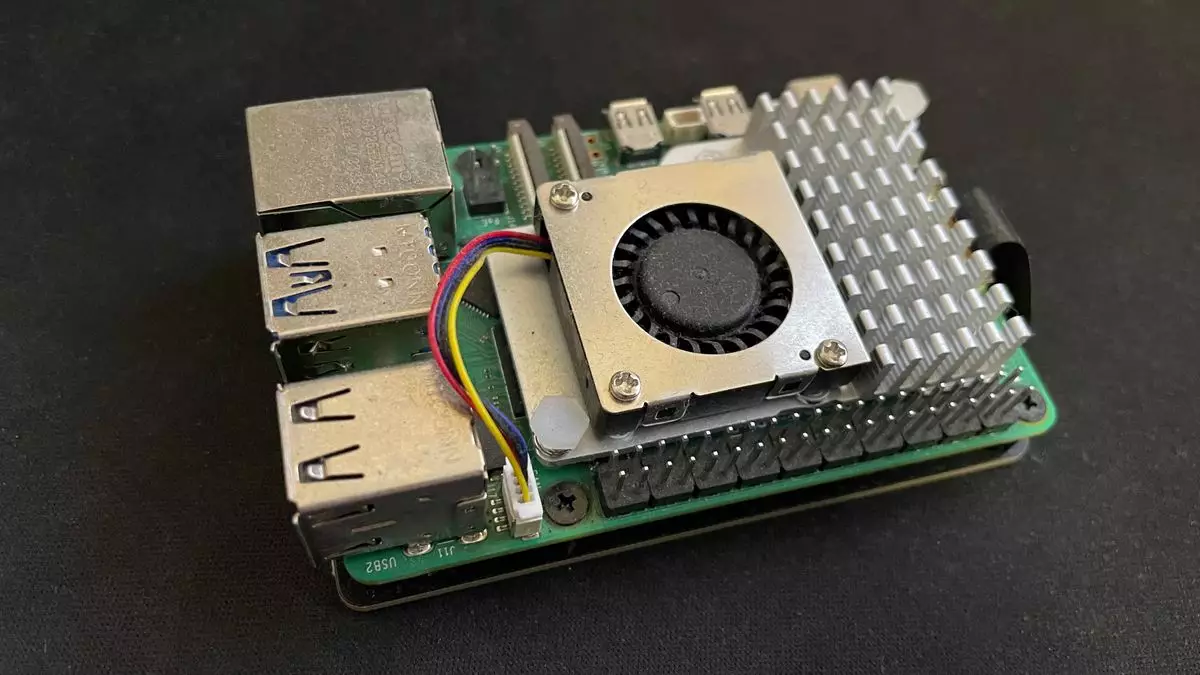The launch of the Raspberry Pi 5 in 2023 brought forth several noteworthy advancements that excited both enthusiasts and casual users alike. Among its standout features is the introduction of PCIe drive support, a significant leap forward that opens up new possibilities for this compact computing powerhouse. This development not only piqued interest regarding the potential for enhanced performance but also ignited discussions about transforming the Raspberry Pi 5 into a capable desktop PC, particularly for light gaming. However, while the technology was promising, the initial lack of official SSD solutions left many users searching for workarounds.
The sheer speed and efficiency offered by Solid State Drives (SSDs) over traditional MicroSD cards are undeniable. While the Raspberry Pi 4 was constrained by its reliance on MicroSD for storage, resulting in sluggish data transfer rates and reduced stability, the evolution to SSD compatibility heralded a new era. Early adopters quickly recognized that to unlock the true potential of the Raspberry Pi 5, investing in an SSD was crucial. My experience with connecting a Crucial P3 SSD through a third-party M.2 HAT underscored this need; the difference in load times and overall system responsiveness was palpable.
However, even though individuals were eager to upgrade, navigating third-party options could become complicated. Ensuring compatibility with specific SSDs often involved considerable effort and research. Many users likely wished for a streamlined solution that would eliminate the guesswork and uncertainty typically associated with hardware expansions in the Raspberry Pi ecosystem.
Recently, Raspberry Pi Ltd addressed this issue by officially introducing SSDs and SSD kits paired with their Hardware Attached on Top (HAT) solutions, adding an exciting layer of convenience for users. This move not only simplifies the upgrade process but also enhances the overall user experience. The availability of reliable, officially supported hardware means that even novice users can confidently enhance their Raspberry Pi 5 without the fear of compatibility issues marring their experience.
The new SSD offerings comprise various capacities, starting with a 256GB drive priced at $30 and a 512GB model available for $45. Each option ensures robust performance, boasting random read and write IOPS that meet modern standards. This kind of value reinforces Raspberry Pi’s commitment to making advanced computing accessible to a broader audience, allowing users to maximize their devices’ operational capabilities without breaking the bank.
While gaming has generated significant buzz around the Raspberry Pi 5’s capabilities, it is far from the only application of the new SSD offerings. With the expanded performance provided by SSDs, users can leverage improved access speeds for other endeavors, such as data analysis, multimedia projects, or even setting up a home server. The growing Raspberry Pi community includes a diverse range of users interested in roles beyond conventional gaming, thus embracing various applications that capitalize on the device’s newfound power.
Moreover, the combination of upgraded storage and increased processing capabilities equips hobbyists and developers with the means to experiment more freely. The ability to run multiple operating systems through virtualization or support resource-intensive applications on a Raspberry Pi has been previously limited; however, the new hardware configurations make these aspirations much more attainable.
As the Raspberry Pi 5’s PCIe connector allows additional flexibility with a simple configuration tweak, users with a flair for tech could potentially unleash further power from their devices. By altering the device’s config file, enthusiasts can access PCIe 3.0 speeds, offering even greater performance. This kind of adaptability speaks volumes about the Raspberry Pi’s design philosophy, which invites users to tinker, optimize, and explore the outer limits of what is possible in a compact form factor.
This versatility becomes especially enticing for the DIY community, as it presents opportunities for intricate projects, including building game servers or developing unique applications for various platforms. The official SSD offerings may serve as just the starting point for what users can achieve with their Raspberry Pi 5 setups.
The availability of official SSDs and M.2 HATs marks a significant turning point for the Raspberry Pi community. No longer are users limited by storage constraints or the trial-and-error chaos of third-party solutions. Instead, they are presented with a streamlined process for upgrading their devices into formidable desktop replacements capable of handling gaming and a myriad of other applications. As interest continues to surge in the Raspberry Pi 5’s capabilities, it is clear that this platform is well on its way to cultivating a dedicated user base, eager to explore diverse uses for this compact yet powerful device.

